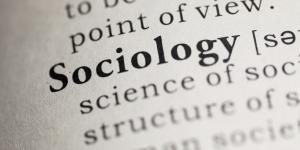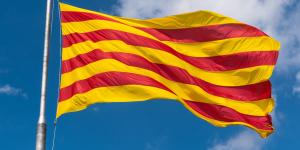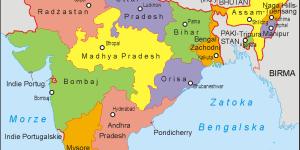What Are the Bloodiest Battles in History?


War, a grim specter that has haunted humanity throughout history, leaves behind a chilling legacy of conflict and loss. Among its most devastating echoes are the battles, those titanic clashes where lives are traded for inches of ground and destinies are rewritten in blood. This exploration delves into the depths of history, unearthing some of the most brutal battles ever fought, battles that stand as stark reminders of the human cost of war.
This article from oneHOWTO delves into the ten deadliest battles in history, aiming to unravel the intricate tapestry of our past. Each of these clashes exposes a complex interplay of political ambitions, technological advancements, and social forces that have collectively shaped the world we inhabit today. By examining these pivotal moments, we gain insight into the profound impact of historical events on the course of humanity.
- Battle of Verdun (1916)
- Battle of Moscow (1941-1942)
- Battle of the Somme (1916)
- Battle of Stalingrad (1942-1943)
- Battle of Berlin (1945)
- The siege of Leningrad (1941-1944)
- The Brusilov Offensive (1916)
- Battle of Warsaw (1920)
- Battle of Xinkou (1937)
- The Siege of Changchun (1948)
Battle of Verdun (1916)
Verdun stands as an enduring testament to France's courage and resistance during one of the bloodiest battles in history, a pivotal chapter in the annals of warfare. In the backdrop of World War I, the German invasion sought to break the French spirit, targeting the strategically vital city and its fortifications.
The Battle of Verdun unfolded from February 21 to December 18, 1916, over a grueling 300 days, becoming synonymous with the relentless carnage that defined the Great War.
More than 750,000 soldiers, from both the Allied and Central Powers, faced the harrowing realities of trench warfare, where every inch of ground came at an exorbitant cost. The German strategy, orchestrated by General Falkenhayn, aimed to inflict such staggering casualties on the French forces that it would compel them to seek a separate peace. Verdun was chosen as the focal point for this ruthless campaign, with the hope of forcing France into a position of vulnerability.
Contrary to Falkenhayn's expectations, the collapse did not transpire, but the toll on human lives was catastrophic. The relentless bombardment and trench warfare pushed both armies to the brink, highlighting the impotence of soldiers against the overpowering force of rival artillery. The Battle of Verdun, a microcosm of the larger conflict, vividly encapsulates the brutal nature of war and the resilience of those caught in its vortex.
Battle of Moscow (1941-1942)
The Battle of Moscow (October 2, 1941, to January 7, 1942) represents a pivotal and bloody chapter in World War II, showcasing the resilience of the Soviet Union against the German onslaught. In an attempt to crush the Soviet capital and deal a decisive blow, German forces, under Operation Barbarossa, faced unforeseen challenges and brutal winter conditions.
The struggle for Moscow, both strategically and symbolically significant, unfolded as a desperate bid to halt the relentless German advance. The battle, marked by a determined Soviet defense led by figures like Georgy Zhukov, became a turning point on the Eastern Front, delivering the first major setback to the German army.
The Battle of Moscow exacted a heavy toll on human lives, underscoring the brutality of war in the harsh Russian winter. Over a million soldiers were either wounded or lost their lives in the icy fields around the city. The indomitable spirit of the Soviet people, coupled with the challenging conditions, played a crucial role in halting the German advance.
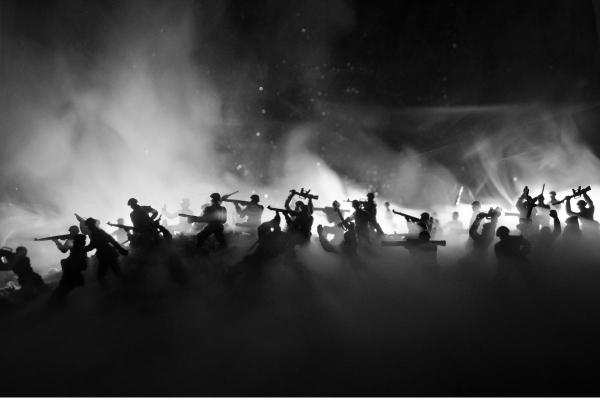
Battle of the Somme (1916)
The Battle of the Somme, fought from July 1 to November 18, 1916, stands as one of the most infamous and devastating battles of World War I. Positioned along the Western Front, the Allied forces, particularly British and French troops, faced off against the German army in a desperate attempt to break the stalemate.
The battle began with a massive offensive, marked by the first day's tragic loss of life, where thousands of soldiers fell in a single day. The Somme became synonymous with the horrors of trench warfare, as both sides endured relentless artillery barrages and faced formidable machine-gun positions.
Despite the eventual territorial gains made by the Allies, the Battle of the Somme exacted an immense human toll. Casualties numbered over a million, making it one of the bloodiest conflicts in history. The struggle for incremental gains in a landscape scarred by mud and barbed wire highlighted the futility and sacrifice inherent in the trench warfare of World War I.
Battle of Stalingrad (1942-1943)
The Battle of Stalingrad (August 23, 1942, to February 2, 1943) stands as a monumental and tragic episode in World War II, epitomizing the immense human sacrifice and resilience in the face of adversity. As German forces, fueled by Hitler's strategic ambitions, sought to capture the strategically vital city of Stalingrad, the battle unfolded as a brutal struggle for survival.
The toll on human lives during the Battle of Stalingrad was catastrophic. Over two million soldiers, from both the Axis and Soviet forces, faced the brutality of street-to-street combat and relentless artillery bombardment. The city's civilian population endured unimaginable hardships, caught in the crossfire of this epic struggle.
By the time the battle concluded on February 2, 1943, Stalingrad lay in ruins, and the cost was staggering—nearly two million casualties, making it one of the bloodiest battles in history. The Soviet victory at Stalingrad marked a turning point in the war, halting the German advance and setting the stage for the eventual Soviet push towards Berlin.
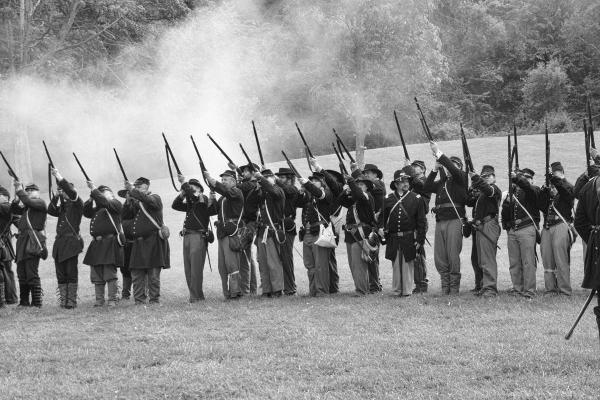
Battle of Berlin (1945)
The Battle of Berlin (April 16, 1945, to May 2, 1945) represents the climactic and devastating final chapter of World War II in Europe. As the Soviet Red Army advanced westward, Berlin became the epicenter of a fierce struggle between the Allies and Nazi Germany. The city, once the heart of Hitler's regime, bore witness to intense urban warfare and unrestrained destruction.
The strategic importance of Berlin and the looming end of the war heightened the ferocity of the conflict. The battle unfolded as a desperate last stand for the Germans, with the Soviet forces determined to bring an end to the Nazi regime. The city's civilian population endured untold hardships amidst the chaos of battle.
The human cost of the Battle of Berlin was staggering. Tens of thousands of soldiers and civilians lost their lives, and the city itself was left in ruins. The intense street fighting, artillery bombardment, and the final collapse of Nazi Germany marked the end of a dark chapter in history.
The Battle of Berlin concluded on May 2, 1945, signaling the fall of the Nazi regime and the end of World War II in Europe.
The siege of Leningrad (1941-1944)
The Battle of Stalingrad (August 23, 1942, to February 2, 1943) stands as a defining and tragic episode in World War II. Fought between the Soviet Union and Nazi Germany, the battle for Stalingrad unfolded as a brutal and protracted conflict for control of this strategically vital city.
The city witnessed some of the most brutal urban warfare in history, with both sides locked in a desperate struggle. The bitter Russian winter added another layer of hardship for soldiers on both sides.
The human toll of the Battle of Stalingrad was staggering, with over two million casualties. The city's civilian population endured unimaginable suffering, caught in the crossfire of this epic confrontation. The battle concluded on February 2, 1943, with the Soviet Union emerging victorious. The ruins of Stalingrad stood as a somber testament to the profound sacrifices made during this brutal chapter of the war.
The Battle of Stalingrad marked a turning point in World War II, halting the German advance and setting the stage for the eventual Soviet push towards Berlin.

The Brusilov Offensive (1916)
The Brusilov Offensive, launched by the Russian Empire during World War I, took place from June 4 to September 20, 1916, on the Eastern Front. Commanded by General Alexei Brusilov, the offensive aimed to relieve pressure on the Allies by diverting German forces from the Western Front and to break through the Austro-Hungarian lines.
The offensive was characterized by innovative tactics, including precise artillery bombardments and coordinated infantry attacks. Brusilov's forces achieved significant initial success, causing a major breakthrough in the Austro-Hungarian lines and capturing thousands of prisoners.
However, the Brusilov Offensive also exacted a heavy human toll. The exact number of casualties, including the number of dead, during the Brusilov Offensive is challenging to pinpoint precisely due to the chaotic nature of World War I and varying historical records.
The intense fighting and casualties on both sides, coupled with logistical challenges, eventually led to a stalemate. Despite the offensive's inability to achieve its overarching strategic objectives, it played a role in shaping the Eastern Front and influencing subsequent military strategies.
Battle of Warsaw (1920)
The Battle of Warsaw, fought from August 12 to August 25, 1920, was a decisive conflict during the Polish-Soviet War. The battle took place near the Polish capital, Warsaw, and played a crucial role in determining the outcome of the war.
The Polish forces, commanded by Marshal Józef Piłsudski, faced the Soviet Red Army led by Mikhail Tukhachevsky. The battle unfolded as a pivotal moment, with the fate of the newly independent Poland hanging in the balance. The Polish defenders, employing strategic maneuvers and utilizing the support of newly arrived French military advisors, managed to repel the numerically superior Soviet forces.
The Battle of Warsaw, often referred to as the "Miracle on the Vistula," resulted in a decisive Polish victory. The successful defense of Warsaw marked a turning point in the war, halting the Soviet advance and ultimately leading to the signing of the Treaty of Riga in 1921. This treaty recognized the eastern borders of Poland and solidified its independence.
The Battle of Warsaw is regarded as one of the most significant military engagements in the aftermath of World War I, shaping the geopolitical landscape of Eastern Europe and securing Poland's place among the community of nations.

Battle of Xinkou (1937)
The Battle of Xinkou took place in 1937 during the early stages of the Second Sino-Japanese War. Fought between the forces of the Republic of China and the Imperial Japanese Army, the battle occurred near the town of Xinkou in Shanxi Province.
Led by Chinese General Yan Xishan, the defending forces aimed to halt the Japanese advance into Shanxi. The battle unfolded as part of the larger conflict between China and Japan, marked by a series of skirmishes and engagements.
The Battle of Xinkou played a role in the defense of Shanxi and demonstrated the resilience of Chinese forces against the Japanese invasion. While specific casualty figures and details about the battle may vary, it is recognized as a significant early engagement in the Second Sino-Japanese War. The conflict continued to escalate, leading to broader hostilities and shaping the course of the war in the Pacific theater.
The Siege of Changchun (1948)
The Siege of Changchun took place in 1948 during the Chinese Civil War between the Nationalist government (Kuomintang) and the Communist forces. Changchun, the capital of Jilin Province, was besieged by the People's Liberation Army (PLA) led by General Lin Biao.
The siege was a prolonged and devastating military campaign, lasting from May to October 1948. The PLA surrounded Changchun, leading to a severe humanitarian crisis. The Nationalist defenders, commanded by General Wang Tiehan, faced significant challenges as the city's population suffered from starvation and disease due to the blockade.
Estimates of civilian casualties during the Siege of Changchun vary, but it is widely acknowledged as a tragic episode in the Chinese Civil War. The prolonged conflict resulted in a significant loss of life and marked a crucial moment in the Communist Party's efforts to gain control of northern China.
The Siege of Changchun exemplifies the hardships faced by civilians caught in the midst of war and reflects the broader human cost of the Chinese Civil War, which ultimately led to the establishment of the People's Republic of China in 1949.

If you want to read similar articles to What Are the Bloodiest Battles in History?, we recommend you visit our Learning category.

